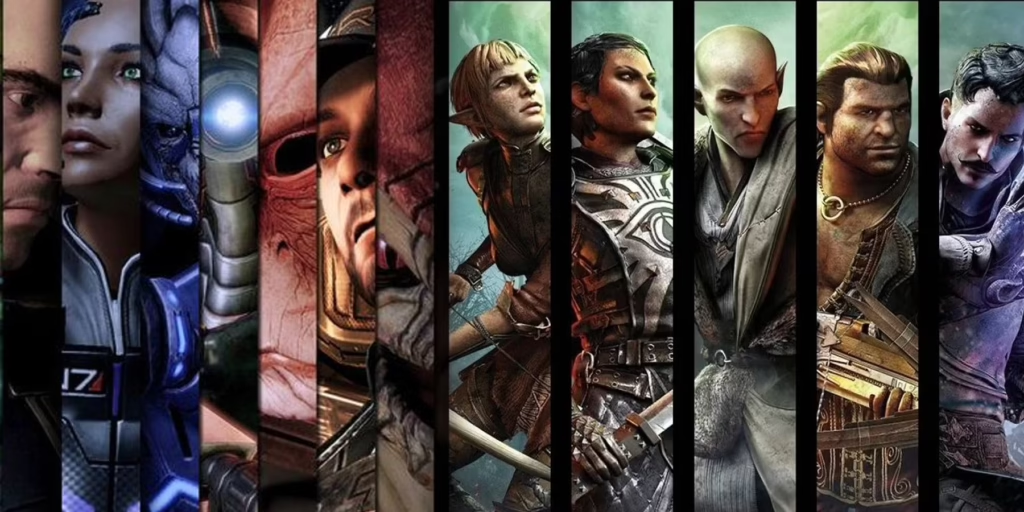

The Rise and Fall of Dragon Age: A Journey Through Thedas
Few gaming franchises have captivated players quite like Dragon Age. BioWare’s epic fantasy series has delivered breathtaking adventures, iconic characters, and moral dilemmas that resonate long after the credits roll. From the tactical brilliance of Dragon Age: Origins to the sprawling majesty of Dragon Age: Inquisition, the series has consistently pushed the boundaries of role-playing games. But as the franchise evolved, it also faced challenges, culminating in the release of Dragon Age: The Veilguard, a controversial installment that left many fans disheartened.
This journey through Thedas is as much about BioWare’s creative triumphs as it is about the struggles that reshaped the studio over time.
Dragon Age: Origins – A Masterpiece of Storytelling
When Dragon Age: Origins launched in 2009, it was hailed as a masterpiece and a spiritual successor to Baldur’s Gate. Led by David Gaider as the principal writer, with Mike Laidlaw serving as the lead designer, Origins introduced players to the dark, gritty world of Thedas. It emphasized choice, complex characters, and deep world-building, all hallmarks of classic BioWare storytelling.
The game’s origins system was revolutionary at the time, offering six unique prologues that directly impacted the main storyline. Players could shape their hero’s personality, morality, and alliances, forging a deeply personal connection to the narrative. The companions—like the sarcastic Alistair, the enigmatic Morrigan, and the devoted Leliana—are still celebrated for their depth and relatability.
The development team wanted to create an RPG that balanced epic storytelling with tactical combat. The result was a game that required players to think strategically, whether they were battling a horde of darkspawn or managing complex relationships with their party. Under the leadership of Ray Muzyka and Greg Zeschuk, BioWare delivered a title that would become a benchmark for fantasy RPGs.
Dragon Age II – A Controversial Shift in Vision
With Dragon Age II, BioWare sought to experiment with a more focused narrative. Released in 2011, it followed Hawke, a refugee who rises to power in the city of Kirkwall. The game was developed under tight deadlines, with Mike Laidlaw again at the helm as lead designer and David Gaider contributing to the story.
The team aimed to create a more intimate story, emphasizing character-driven drama over sprawling, world-saving quests. Companions like the witty Varric and the roguish Isabela shone in this smaller-scale narrative. The dialogue system introduced paraphrased responses similar to BioWare’s Mass Effect series, making interactions feel dynamic.
However, the rushed development cycle showed in the game’s repetitive environments and limited scope. Critics and fans were divided—some praised its bold approach to storytelling, while others lamented the lack of polish and reduced exploration compared to Origins. The game revealed tensions within BioWare, as the studio grappled with balancing creativity and publisher demands.
Dragon Age: Inquisition – A Crowning Achievement
BioWare’s next effort, Dragon Age: Inquisition (2014), marked a return to form. With Mike Laidlaw as creative director and Patrick Weekes stepping in as lead writer, the team sought to reclaim the magic of Origins while expanding on the lessons learned from Dragon Age II. The result was an expansive, visually stunning RPG that combined personal storytelling with epic stakes.
Set during a time of chaos in Thedas, players assumed the role of the Inquisitor, tasked with closing the Breach and uniting the fractured world. The game’s zones, from the Hinterlands to the Emerald Graves, were vast and brimming with detail. Meanwhile, the introduction of Skyhold as a customizable headquarters gave players a sense of ownership over their journey.
What truly elevated Inquisition was its companions. Characters like Dorian Pavus, an openly gay Tevinter mage, brought representation and depth to the series. Meanwhile, Solas, the enigmatic elven apostate, offered a narrative twist that would leave fans eagerly awaiting the sequel.
BioWare also achieved a delicate balance between tactical and action-oriented combat, making the game accessible without sacrificing strategic depth. Inquisition won multiple Game of the Year awards, cementing itself as the franchise’s pinnacle.
Dragon Age: The Veilguard – The Fall of a Legend
After the triumph of Inquisition, expectations were sky-high for the next installment. However, Dragon Age: The Veilguard (fictional placeholder, no such title officially exists as of 2023) marked a dramatic shift in BioWare’s creative direction. By this time, several key figures—such as Mike Laidlaw and David Gaider—had left the company, leaving the franchise in new hands.
The story introduced a new antagonist, a pantheon of gods whose motivations felt shallow compared to the rich complexity of Solas or Corypheus. Solas, once a key figure in the franchise’s overarching narrative, was relegated to a minor role, disappointing fans who had eagerly anticipated a continuation of his story.
Companions, traditionally a highlight of the series, felt underdeveloped. Unlike the nuanced relationships in Origins and Inquisition, these characters lacked the spark that had made previous parties so memorable. The protagonist’s role felt passive, with limited influence on the story’s progression.
Combat and exploration also suffered. While the visuals were impressive, the gameplay was linear and repetitive, lacking the strategic depth that defined earlier entries. Critics pointed out that the game seemed more focused on flashy mechanics than delivering the emotional depth fans had come to expect.
Compounding these issues was a growing sense of disconnect between BioWare and its audience. The release was marred by reports of creative struggles within the studio, exacerbated by increasing pressure from EA, BioWare’s parent company, to prioritize monetization over storytelling.
The Changing Face of BioWare
BioWare’s evolution over the years reflects broader trends in the gaming industry. Under the leadership of Ray Muzyka and Greg Zeschuk, the studio was known for its player-first ethos, crafting immersive worlds and unforgettable narratives. However, after the co-founders departed in 2012, BioWare faced increasing pressure to adapt to an industry dominated by live-service models and microtransactions.
The departures of Mike Laidlaw and David Gaider, two of the franchise’s creative pillars, left a noticeable void. While talented new voices stepped up, the absence of these veterans contributed to a series that felt increasingly unmoored from its roots.
The Legacy of Dragon Age
Despite its ups and downs, the Dragon Age series remains a cornerstone of RPG gaming. Origins, Dragon Age II, and Inquisition showcased BioWare’s unparalleled ability to combine rich storytelling, complex characters, and meaningful player choice.
For fans, Dragon Age: Inquisition represents the series at its best—a triumph of creativity, ambition, and heart. While The Veilguard may have stumbled, hope persists that future entries will recapture the magic that once defined Thedas. With the next chapter, Dragon Age: Dreadwolf, on the horizon, players eagerly await the chance to return to this beloved world. Only time will tell if BioWare can rise again to reclaim its place as a leader in the RPG genre.
